Penthungo Ezung1*, Sharat Agarwal2
1Senior Resident Doctor, Department of Orthopedics and Trauma, North Eastern Indira Gandhi Regional Institute of Health and Medical sciences (NEIGRIHMS), Shillong, India
2Professor, Department of Orthopedics and Trauma, North Eastern Indira Gandhi Regional Institute of Health and Medical Sciences (NEIGRIHMS), Shillong, India
*Correspondence author: Sharat Agarwal, Professor, Department of Orthopedics and Trauma, North Eastern Indira Gandhi Regional Institute of Health and Medical Sciences (NEIGRIHMS), Shillong, India; Email: [email protected]
Published Date: 19-12-2023
Copyright© 2023 by Agarwal S, et al. All rights reserved. This is an open access article distributed under the terms of the Creative Commons Attribution License, which permits unrestricted use, distribution, and reproduction in any medium, provided the original author and source are credited.
Abstract
Background: Lateral Condyle Fractures are the second most common fracture amongst the pediatric elbow fractures, which is usually neglected commonly due to parents not seeking timely medical help or clinician missing the diagnosis with lack of knowledge or understanding.
Case Presentation: A 3-year-old female was presented in the outpatient department with outward bowing of the right elbow following a history of FOOSH injury more than a month back. Clinical examination showed gross valgus deformity with an increased carrying angle with thickened and irregular lateral condyle on examination. Adiograph of the elbow showed nonunion of the lateral humeral condyle with lateral displacement and malrotation of the fracture fragment. The carrying angle of the affected side was 50º and Baumann’s angle on affected side was 40º. A CT scan also showed displaced fracture of lateral epicondyle of right humerus. Patient was treated successfully with Open Reduction and Internal Fixation (ORIF) with Kirschner (k) wires. On follow up, the patient had significant improvement with the correction of valgus deformity and overall improvement in the elbow range of movements.
Keywords: Lateral Condyle Fracture; Valgus Deformity; Neglected Lateral Condyle Fracture
Introduction
Lateral Condyle Fractures (LCF) are the second most common fracture in the pediatric elbow fractures following supracondylar fracture of the humerus. It accounts for 10-20% of pediatric elbow fractures [1]. Fracture of Lateral Condyle (LCF) of humerus is neglected many times due to parents not seeking timely medical assistance or clinician missing the diagnosis [2]. The diagnosis can be difficult both radiologically and clinically. It usually results in the loss of function, due to its intraarticular extension. Incorrectly treated lateral physical injury may remain unnoticed until months or years after the initial injury [3]. They have a high risk of complications such as nonunion, tardy ulnar nerve palsy, elbow stiffness, hypertrophic scar, avascular necrosis of ossific nucleus, malunion and angular deformity [4-5]. Lateral condyle fractures are classified according to Milch classification and also on the degree of displacement. When these fractures, especially Milch type 2 and displaced fractures, are not treated appropriately, they can lead to complications like non-union, cubitus valgus with increasing carrying angle, with or without tardy ulnar nerve palsy. In late presentation, there is a debate between osteosynthesis of the fracture fragment or correction of deformity with osteotomies and anterior transposition of ulnar nerve or sometimes combination of both procedures [6-7]. The majority are in favor of ostosynthesis as early as possible to prevent progressive valgus deformity in a growing child and enabling the condyle to take part in the growth of lower humerus [8]. The commonly used implants for fixation are Kirschner wire (K-wires) and Cannulated Screw (CS).
Case Presentation
A 3-year-old girl presented with her mother with a history of gross outward bowing (valgus deformity) of the right elbow after a slip and fall on her outstretched hand more than a month back. Patient had history of local massage. There were no associated neurological complaints. Clinical examination showed gross valgus deformity with an increased carrying angle and lateral condyle was found thickened and irregular. The three-point bony relationship at elbow was disturbed and the intercondylar distance was widened with lateral epicondyle laterally displaced. The elbow joint was in a fixed flexion deformity of 30 degrees. She did not have any signs of distal neurovascular deficit. Radiographs of the elbow showed nonunion of the lateral humeral condyle with lateral displacement and malrotation of lateral condyle. Her carrying angle of the affected side was 50º as compared to 10º on the normal side and Baumann’s angle on affected side was 40º as compared to 71º on the normal side (Fig. 1).
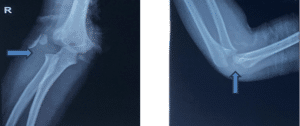
Figure 1: Anteroposterior and Lateral radiographs of the elbow showing rotated, displaced ununited fracture of lateral condyle of humerus respectively as indicated by arrows.
CT Scan
CT scan report showed displaced fracture of lateral epicondyle of right humerus (Fig. 2-4).
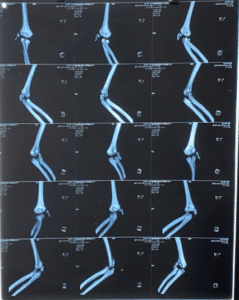
Figure 2: CT scan films showing the ununited rotated.

Figure 3: CT scan films showing displaced ununited fracture of lateral condyle of humerus.
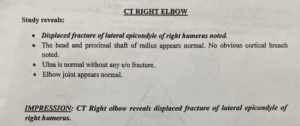
Figure 4: CT report showing displaced fracture as seen on films.
After establishing the clinical and radiological diagnosis of non-union of the lateral condyle fracture of humerus, it was decided to manage the patient with Open Reduction and Internal Fixation (ORIF) with Kirschner (k) wires.
The patient was operated under general anaesthesia maintaining all aseptic precautions, using Kocher’s approach. On surgical exposure, it was found that the fracture lateral condyle was completely malrotated and with no callus formation. The fracture was reduced and under fluoroscopic image guidance transfixed with 3 K wires from lateral to medial direction. Intra-operative and post operative period was uneventful.
The patient was followed up on OPD basis and after a period of 3 weeks the K wires were removed as the fracture site showed signs of healing and callus formation. Functionally the patient improved significantly with the valgus deformity corrected and overall improvement in the elbow range of movements as shown in the Fig. 5-11.
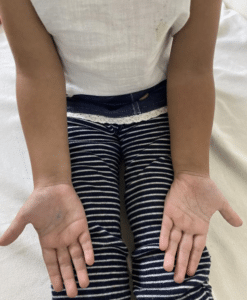
Figure 5: Clinical picture showing Cubitus valgus deformity corrected after surgery.
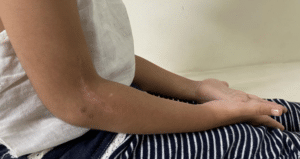
Figure 6: Clinical picture showing healed surgical scar with complete supination of the elbow and flexion obtained at the elbow after surgery.
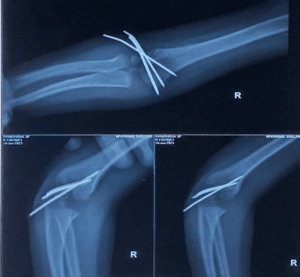
Figure 7: Postoperative radiograph at 3 weeks showing K-wires in situ with anatomically reduced lateral condyle fracture of humerus in anteroposterior and lateral views respectively.
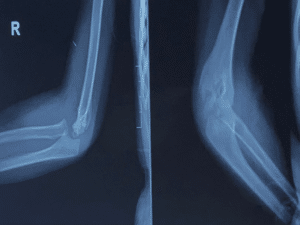
Figure 8: Post operative X ray after 1 month showing radiological union.
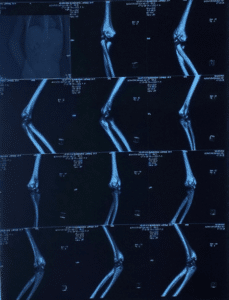
Figure 9: Post op CT scan (fracture got united apparently).
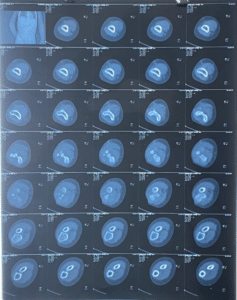
Figure 10: CT scan films showing united fracture after 6 weeks of surgery.

Figure 11: CT scan report showing union of the lateral condyle of humerus fracture fragment not seen as possibly united.
Discussion
Nonunion primarily occurs due to the pull of the supinator, long extensors of the wrist and fingers and radial collateral ligaments, which leads to rotation of the fractured fragment with cartilage surface coming in contact with the fractured surface of the proximal fragment. Although LCF in children is quite common, there are many reasons of its delayed presentation to orthopedic surgeons in developing nations like India for e.g., lack of awareness of the parents, financial constraints, inadequate availability of health care facilities, inadequate knowledge and fracture getting missed by clinicians or even fractures frequently being managed by osteopaths [9].
The well-accepted treatment modality of this fracture in acute cases is ORIF [10]. The commonly used implants for fixation are Kirschner wire (K-wires) and Cannulated Screws (CS). Osteosynthesis by Kirschner wire without bone grafting resulted into good bony union and improved elbow function in our case, where bone grafting was not considered due to shorter period of neglected presentation of over a month only. This approach to management can be considered as safe and effective for growing children with displaced and neglected presentation of lateral condyle humerus of elbow joint.
Conclusion
ORIF of neglected LCF of humerus gives excellent result irrespective of implant used for fixation. It can be augmented with bone graft harvested from iliac crest in case of established nonunion cases after 3 months. Postoperative immobilization is recommended till radiological appearance of callus.
Conflict of Interest
The authors have no conflict of interest to declare.
References
- Mizuta T, Benson WM, Foster BK. Statistical analysis of the incidence of physeal injuries. J Pediatr Orthop. 1987;7:518-23.
- Landin LA, Danielsson LG. Elbow fractures in children. An epidemiological analysis of 589 cases. Acta Orthop Scand. 1986;57:309-12.
- Beaty JH, Kasser JR. Rockwood and Wilkins’ fractures in children. Philadelphia: Lippincott Williams and Wilkins. 2006.
- Skak SV, Olsen SD, Smaabrekke A. Deformity after fracture of the lateral humeral condyle in children. J Pediatr Orthop. 2001;10:142-52.
- Toh S, Tsubo K, Nishikawa S, Inoue S, Nakamura R, Harata S. Long standing nonunion of fractures of the lateral humeral condyle. J Bone Joint Surg Am. 2002;84-A:593-8.
- Jakob R, Fowles JV, Rang M, Kassab MT. Observations concerning fractures of the lateral humeral condyle in children. J Bone Joint Surg Br. 1975;57:430-6.
- Shimada K, Masada K, Tada K, Yamamoto T. Osteosynthesis for the treatment of nonunion of the lateral humeral condyle in children. J Bone Joint Surg Am. 1997;79:234-40
- Roye DP Jr, Bini SA, Infosino A. Late surgical treatment of lateral condylar fractures in children. J Pediatr Orthop. 1991;11:195-9.
- Saraf SK, Khare GN. Late presentation of fractures of the lateral condyle of the humerus in children. Indian J Orthop. 2011;45:39-44.
- Roye DP Jr, Bini SA, Infosino A. Late surgical treatment of lateral condylar fractures in children. J Pediatr Orthop. 1991;11:195-9.
Article Type
Review Article
Publication History
Accepted Date: 24-11-2023
Accepted Date: 11-12-2023
Published Date: 19-12-2023
Copyright© 2023 by Agarwal S, et al. All rights reserved. This is an open access article distributed under the terms of the Creative Commons Attribution License, which permits unrestricted use, distribution, and reproduction in any medium, provided the original author and source are credited.
Citation: Agarwal S, et al. Do not Miss a Pediatric Lateral Condyle Fracture- A Case Based Description of Neglected Case Managed with Good Outcome. J Ortho Sci Res. 2023;4(3):1-8.

Figure 1: Anteroposterior and Lateral radiographs of the elbow showing rotated, displaced ununited fracture of lateral condyle of humerus respectively as indicated by arrows.

Figure 2: CT scan films showing the ununited rotated.

Figure 3: CT scan films showing displaced ununited fracture of lateral condyle of humerus.

Figure 4: CT report showing displaced fracture as seen on films.

Figure 5: Clinical picture showing Cubitus valgus deformity corrected after surgery.

Figure 6: Clinical picture showing healed surgical scar with complete supination of the elbow and flexion obtained at the elbow after surgery.

Figure 7: Postoperative radiograph at 3 weeks showing K-wires in situ with anatomically reduced lateral condyle fracture of humerus in anteroposterior and lateral views respectively.

Figure 8: Post operative X ray after 1 month showing radiological union.

Figure 9: Post op CT scan (fracture got united apparently).

Figure 10: CT scan films showing united fracture after 6 weeks of surgery.

Figure 11: CT scan report showing union of the lateral condyle of humerus fracture fragment not seen as possibly united.


